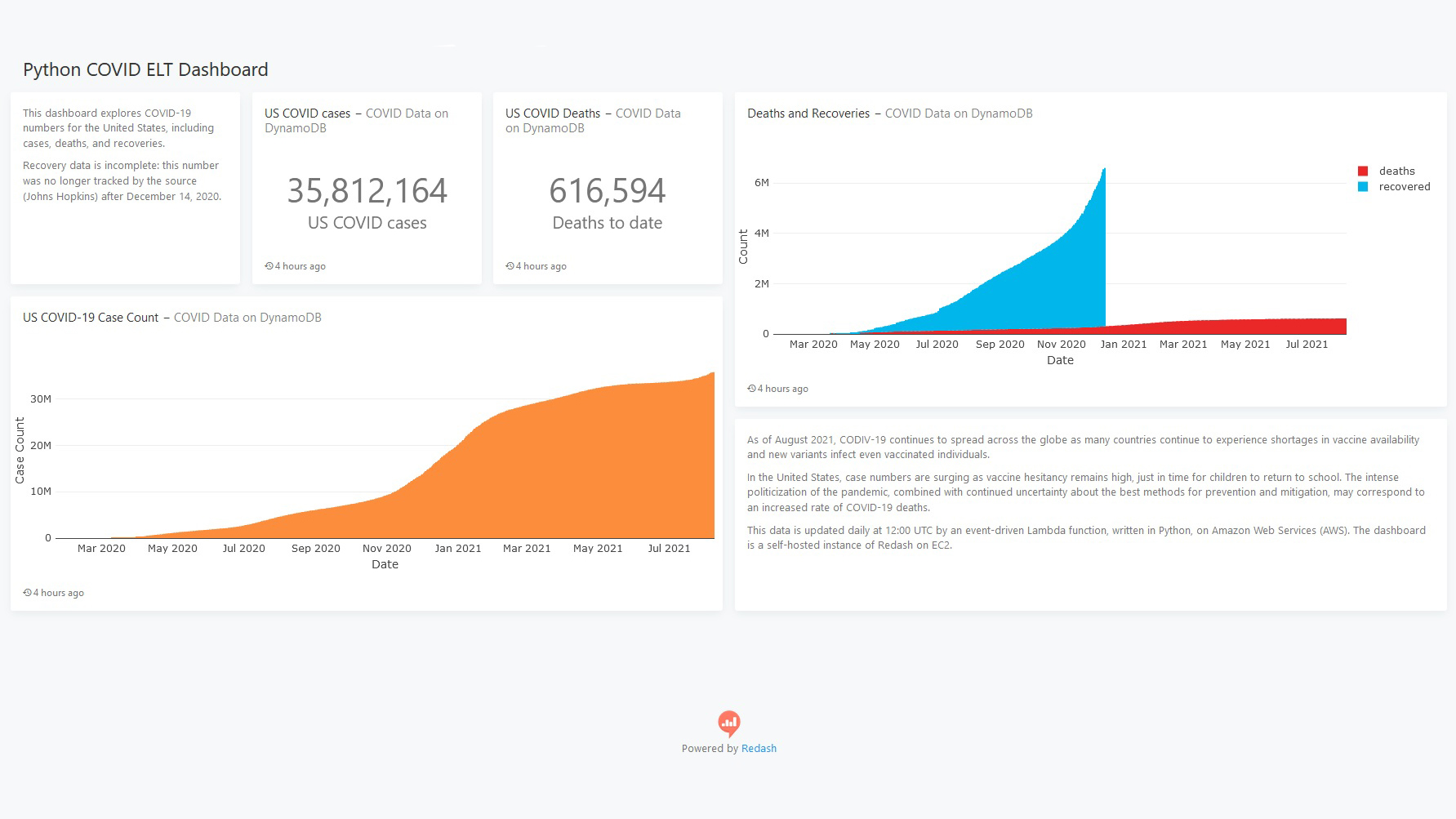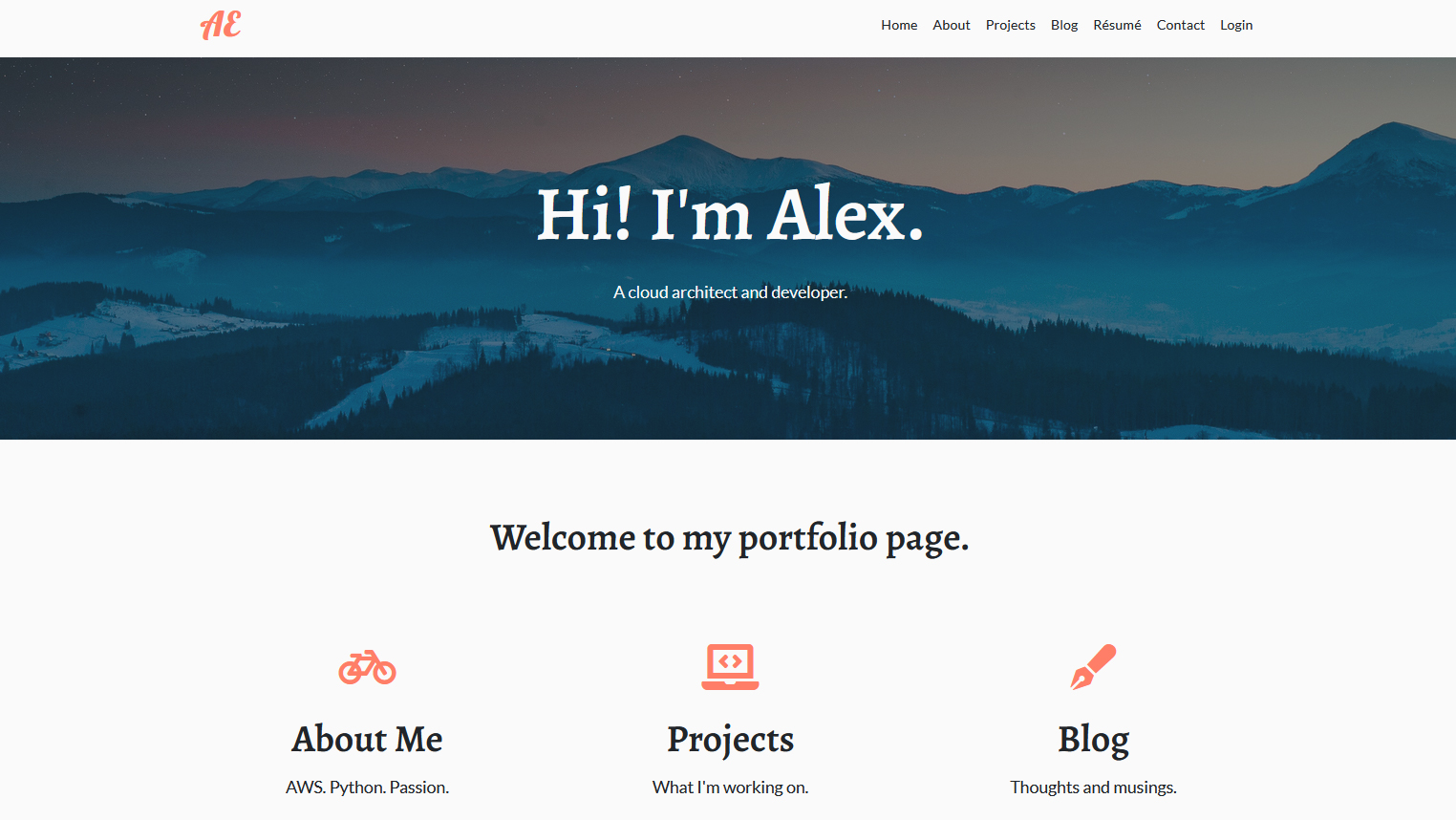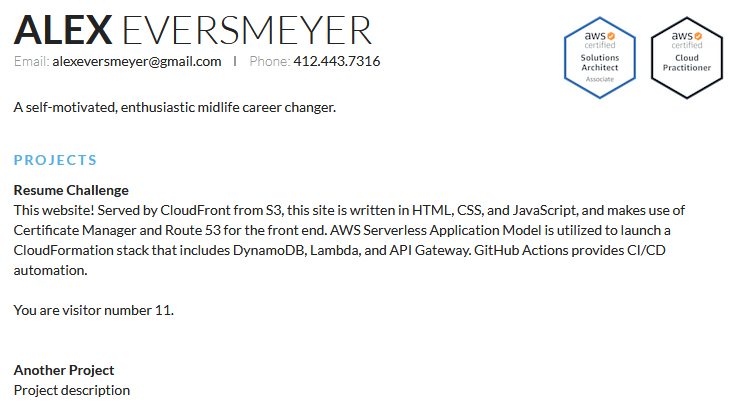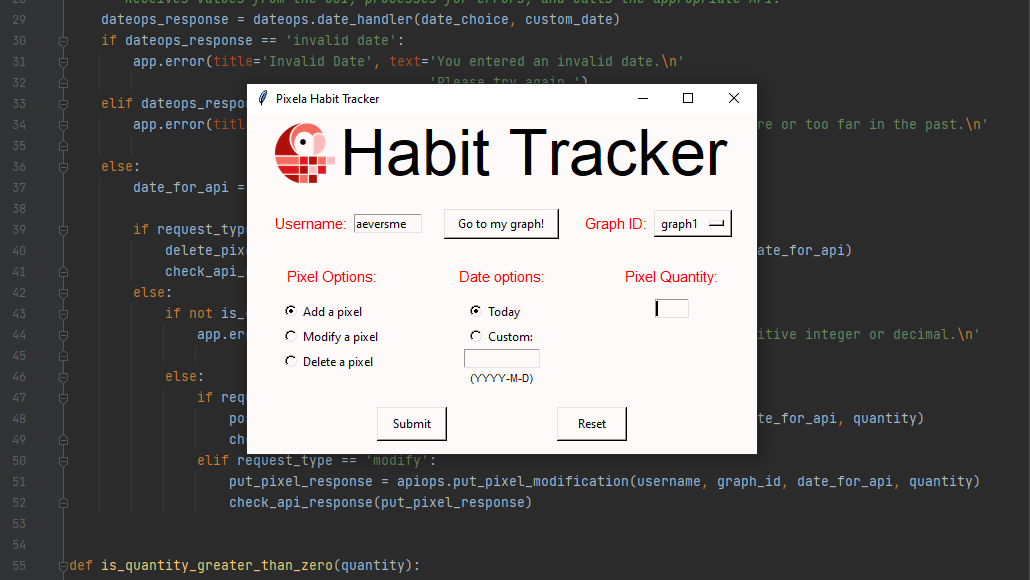An FPV quadcopter post-flight telemetry visualization tool
- Python, Streamlit
- Docker, ECR, ECS
- Terraform, Terraform Cloud
- Git, GitHub, Github Actions
Streamlit application, authored in Python, that transforms an uploaded CSV file and displays flight
metrics, a map with a flight path trace, and graphs of relevant sets of data. The app and its
dependencies are packaged as a Docker image, uploaded to Amazon Elastic Container Registry, and
launched serverlessly using AWS Fargate.
The Terraform configuration for this project is modularized, and several files are provided as
templates for manipulation within GitHub Actions. The primary Actions (both for building and
uploading the app's Docker image, and for deploying the app's infrastructure) are reusable, and can
be called from either the dev of main branches of the repository.
Some of the challenges I solved during development:
- Many of Streamlit's abstracted integrations (for example, plotly) are easy to work with,
but I found adding a map with a trace of the quadcopter's GPS flight path to be rather
difficult. After a lot of trial and error, I determined the format that the flight path map
layer needed and added a transform to the Pandas dataframe to aggregate the appropriate
columns.
- Keeping the Mapbox API key secret took me down several rabbit holes, because the Streamlit
app looks for that key in a .toml file. Since TOML is a markup language and not a scripting
language, I couldn't simply pass the key in as an environment variable. My solution was to
create the necessary config file as an early step in the GitHub Action, using the 'sed'
command, before building the Docker image.
- I set up two separate AWS accounts within an organization for this app: one account for
development and testing, and one for production. I wanted a way to deploy to the correct
account depending on which branch of the repository was being used, so that I didn't end up
with multiple infrastructures within one account. After testing each action in the dev
account, I refactored them to be reusable with certain required secrets and parameters.
These reusable Action scripts are called by smaller, branch- and path-dependent Actions.
Design narratives on Dev.to (click to read):
To-dos include: checks and conditionals for different CSV column headings, to accommodate
different radio/flight controller combinations; automated unit-testing; ability for users to
register/authenticate and upload telemetry files to S3.




